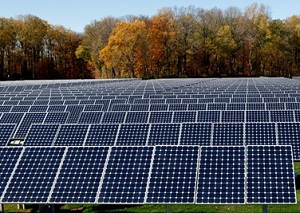Princeton University installs 5.3 MW solar system
 Princeton University, which has long been a beacon of learning in higher education, will soon be a beacon of solar energy production and green practices as well.
Princeton University, which has long been a beacon of learning in higher education, will soon be a beacon of solar energy production and green practices as well.
The Ivy League school in New Jersey signed a contract earlier this month to install a 5.3-megawatt SunPower solar array on 27 acres it owns in West Windsor Township, according to a press release from the school.
The array, which will be composed of 16,500 solar photovoltaic panels, will be owned and maintained by Key Equipment Finance, a company based in Superior, Colo.
The University is using a distinctive business model that will pay for the system's lease through incentives by, initially, selling solar renewable energy credits associated with the system, according to the release.
The array will be the largest single one erected by a higher education institution to date, according to the release.
The array is part of the university’s larger green plans, said university spokeswoman Emily R. Aronson.
“The University adopted a comprehensive Sustainability Plan in 2008,” Aronson said. “The plan sets ambitious goals in the areas of greenhouse-gas-emissions reduction, resource conservation, and research, education and civic engagement.”
The University aims to reduce its greenhouse gas emissions to 1990 levels by 2020 without purchasing offsets, Aronson said.
“The solar collector field will be a significant contributor among a number of strategies the University is employing to reach its greenhouse-gas reduction goals,” she said.
SunPower is expected to begin construction on the array this summer and finish by the summer of 2012, according to the press release. It will generate about 8 million-kilowatt hours of electricity per year—enough to power 700 homes.
The system is expects to supply about 5.5 percent of the electric needs for the entire Princeton campus, according to the release.
In addition to installing the solar array to generate electricity, Aronson said the university is improving the energy efficiency of the buildings the system will serve.
The system is expected to shave off about 8 percent of the universities electric costs and reduce carbon emissions by 3,090 metric tons per year, which represents 6 percent of the university’s reduction goal, Aronson said.
Image courtesy of Princeton.edu.



